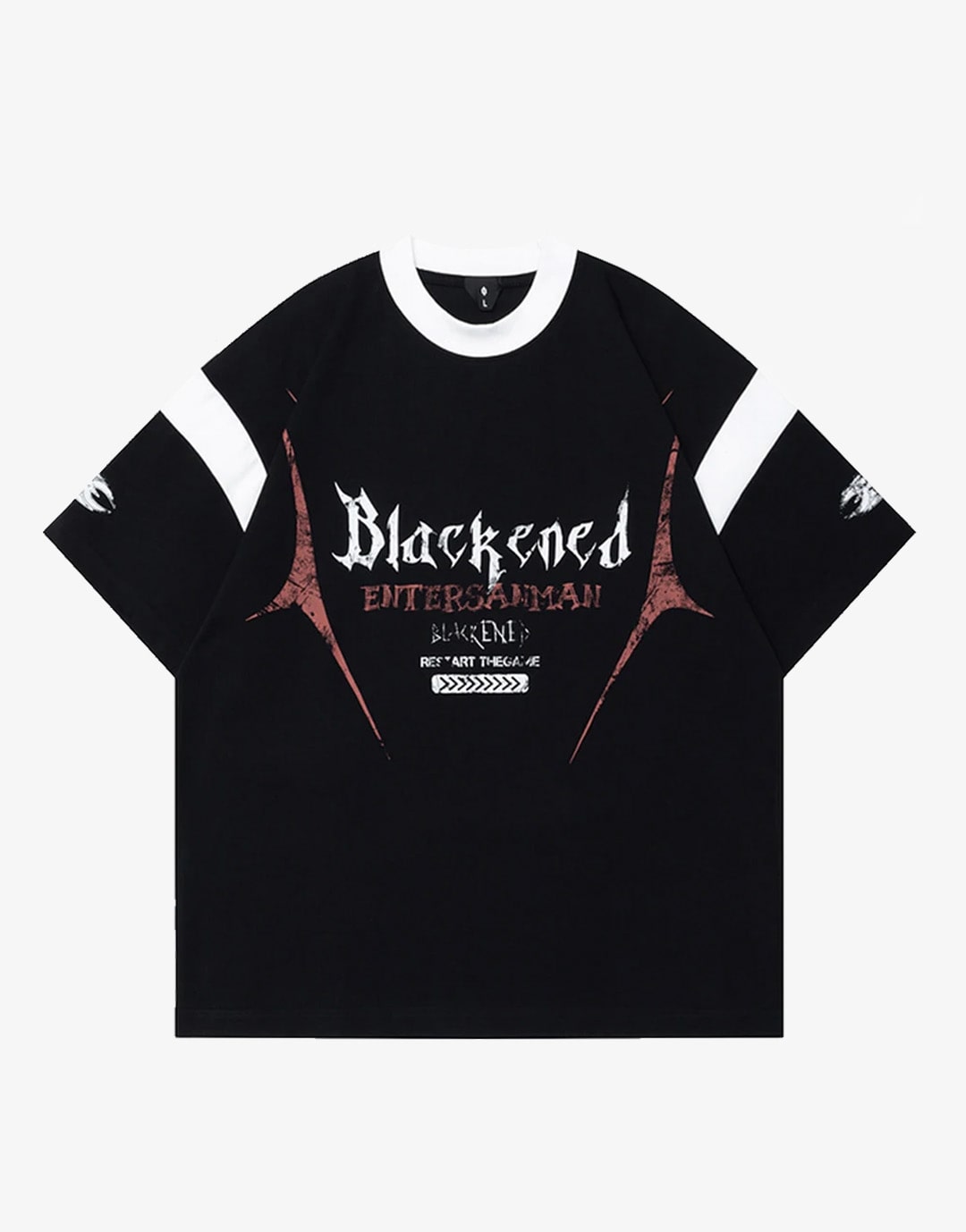
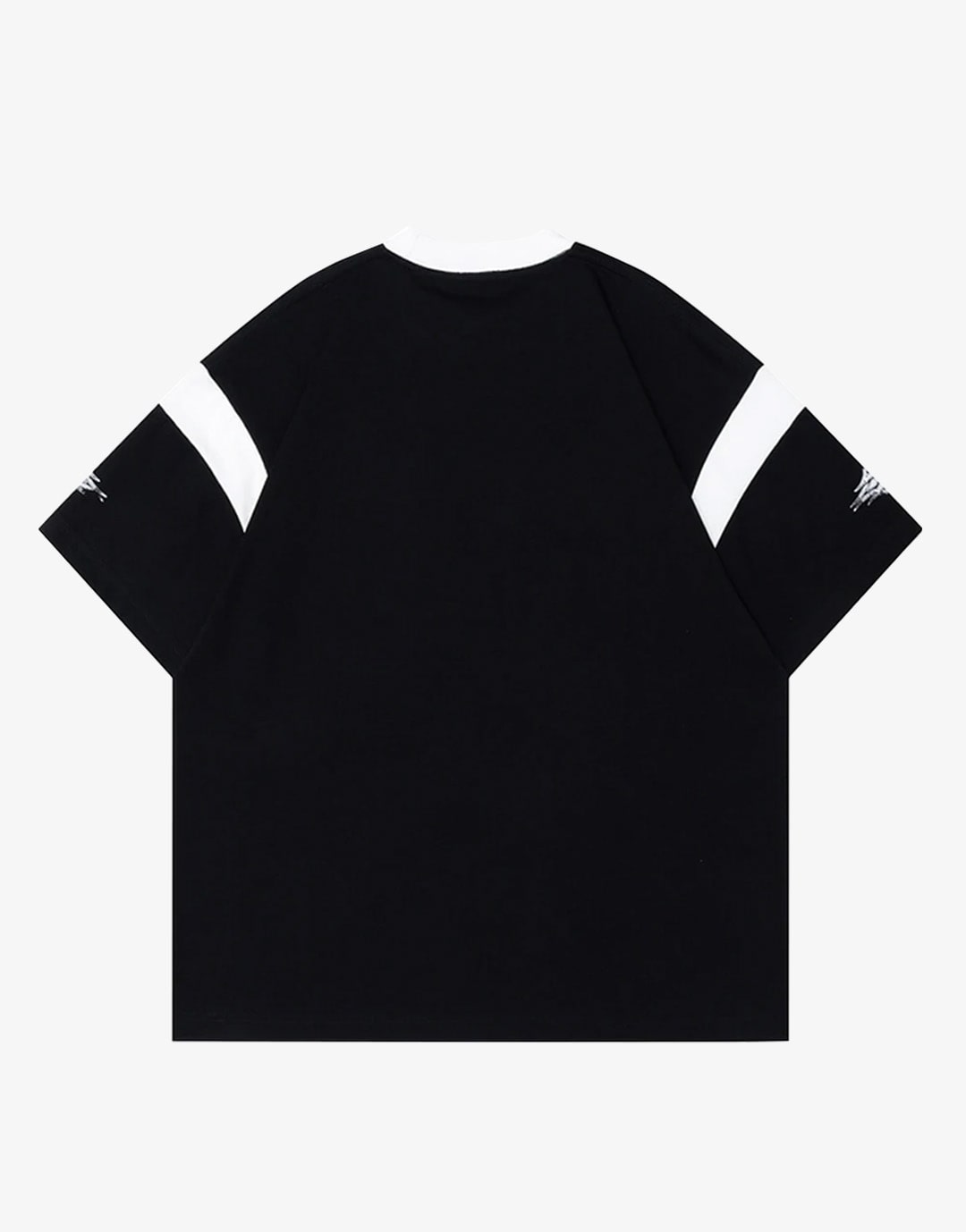
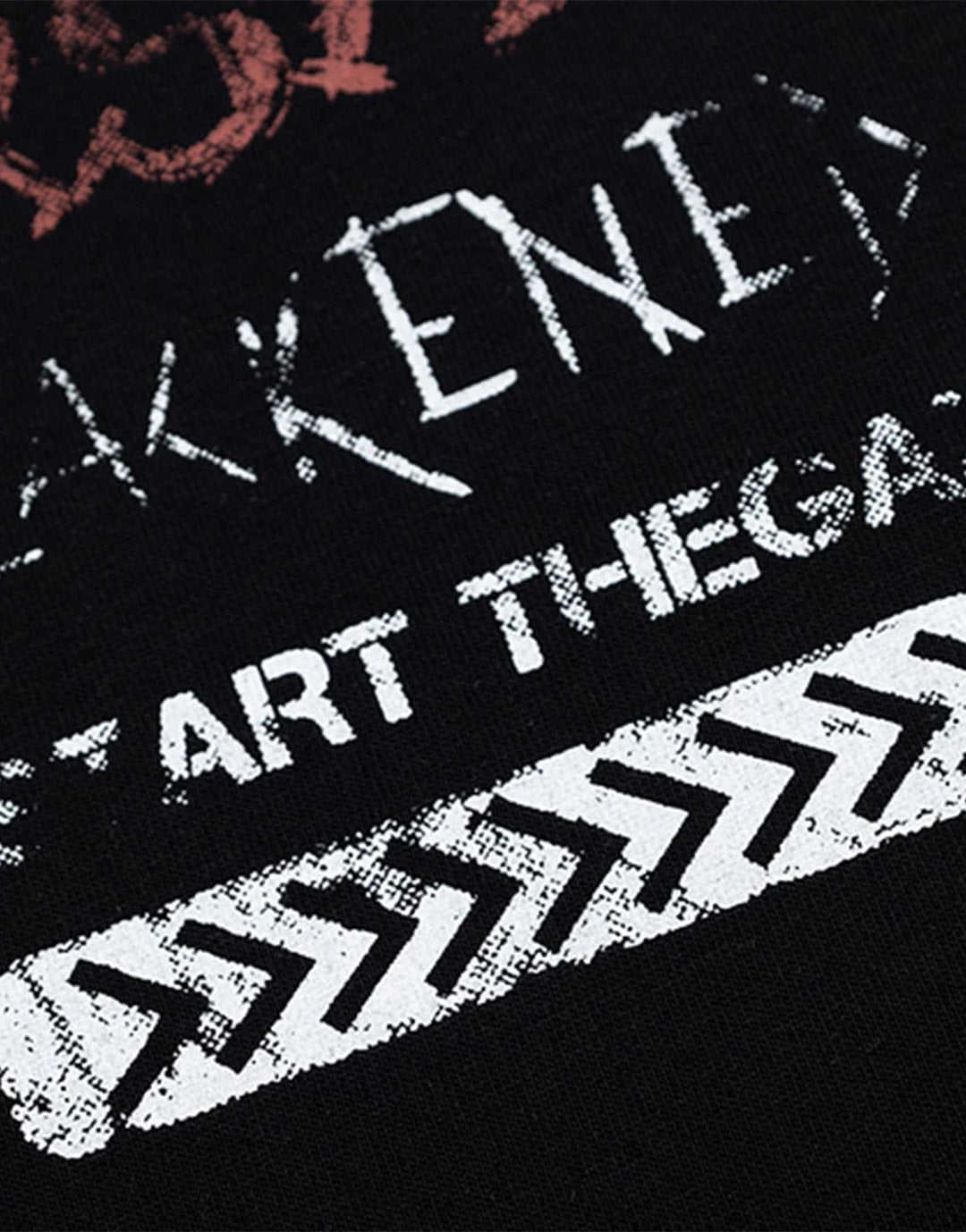
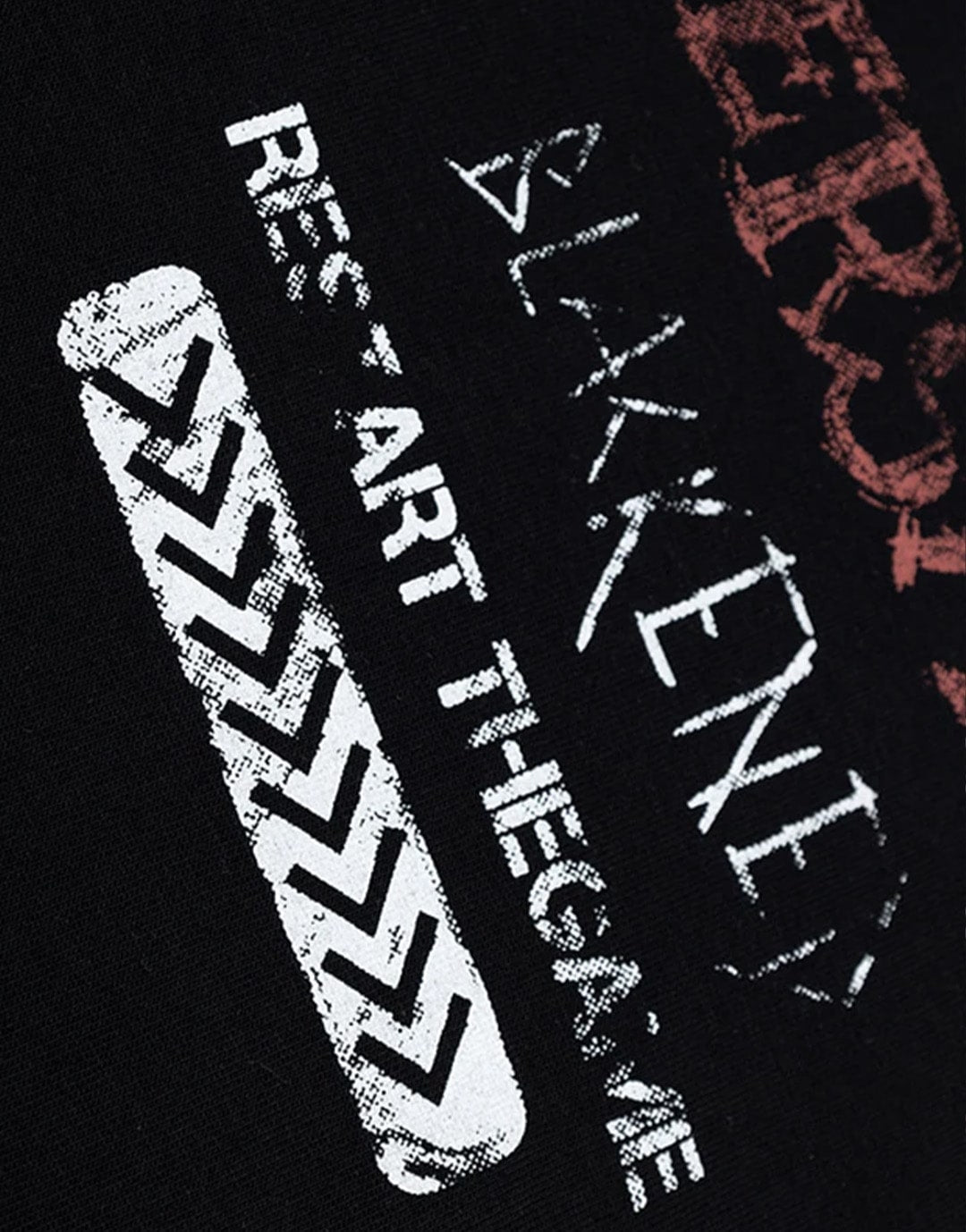
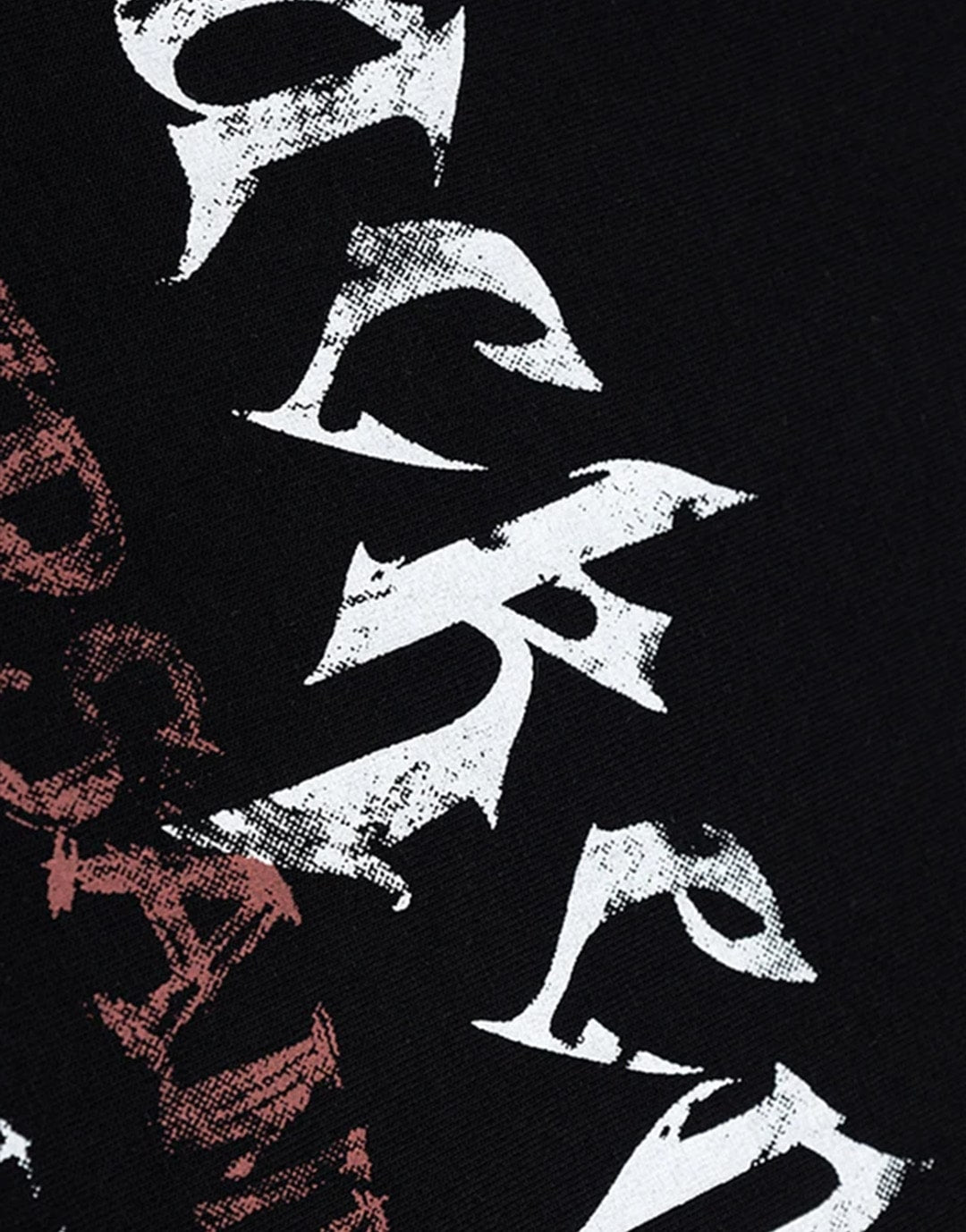
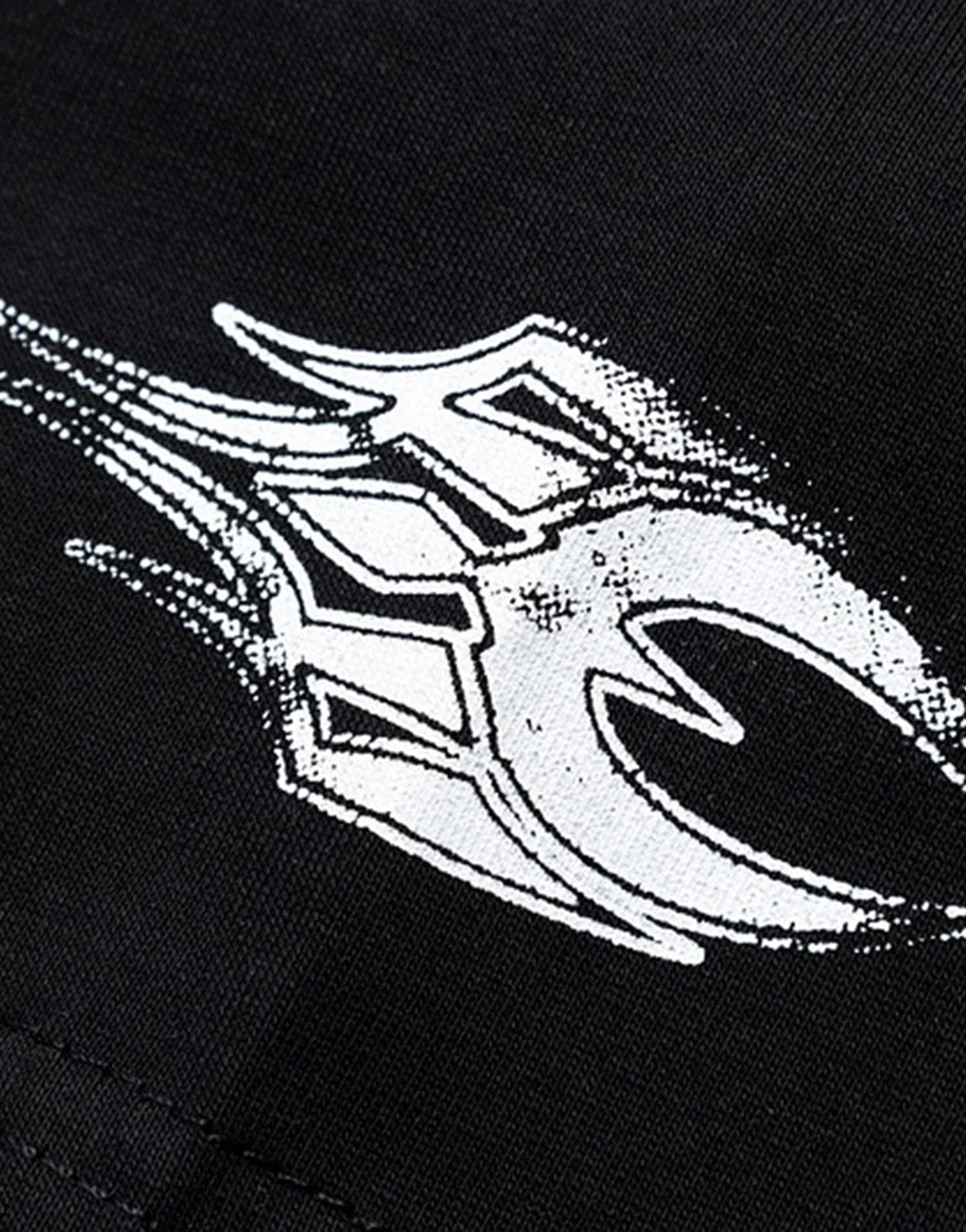

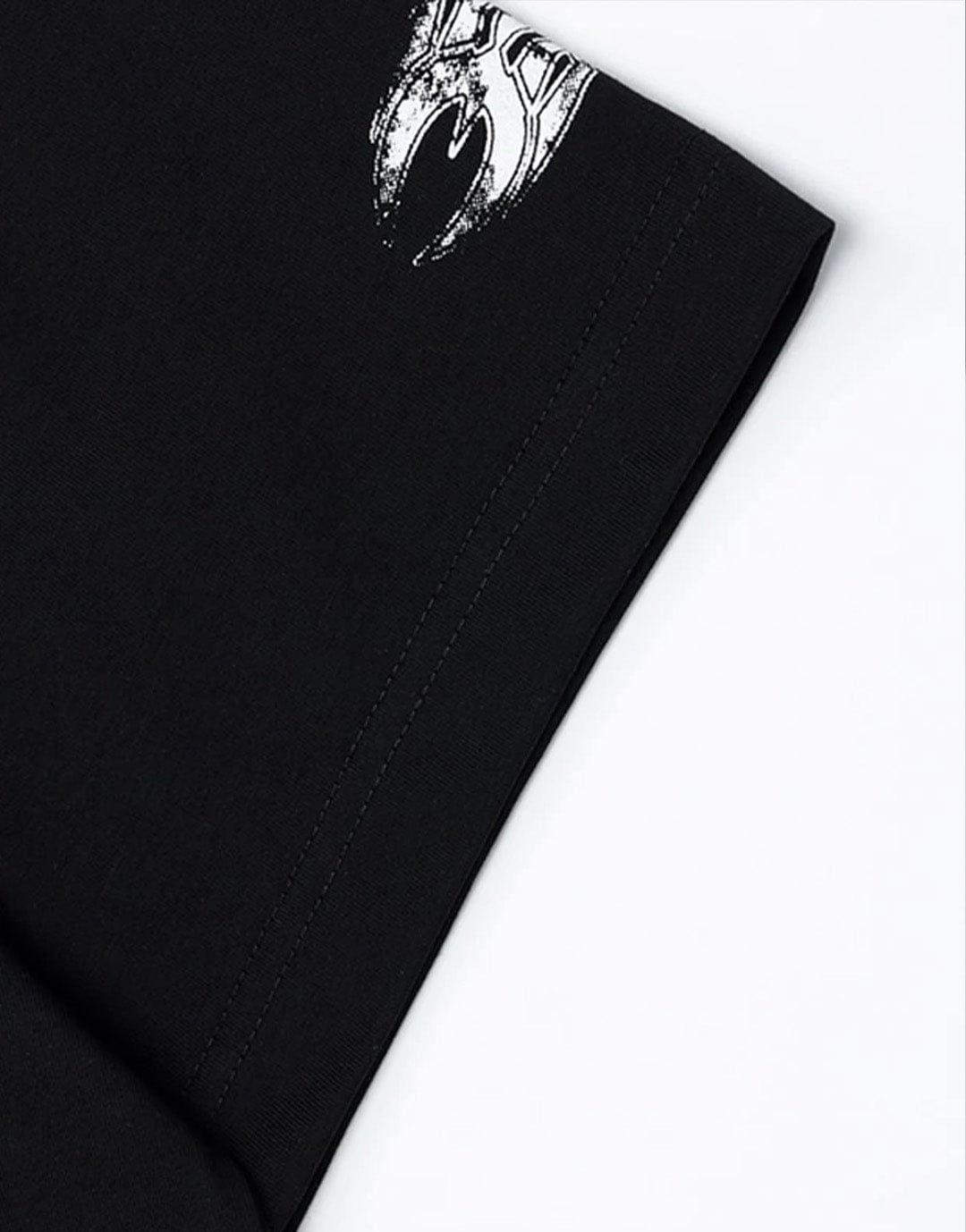

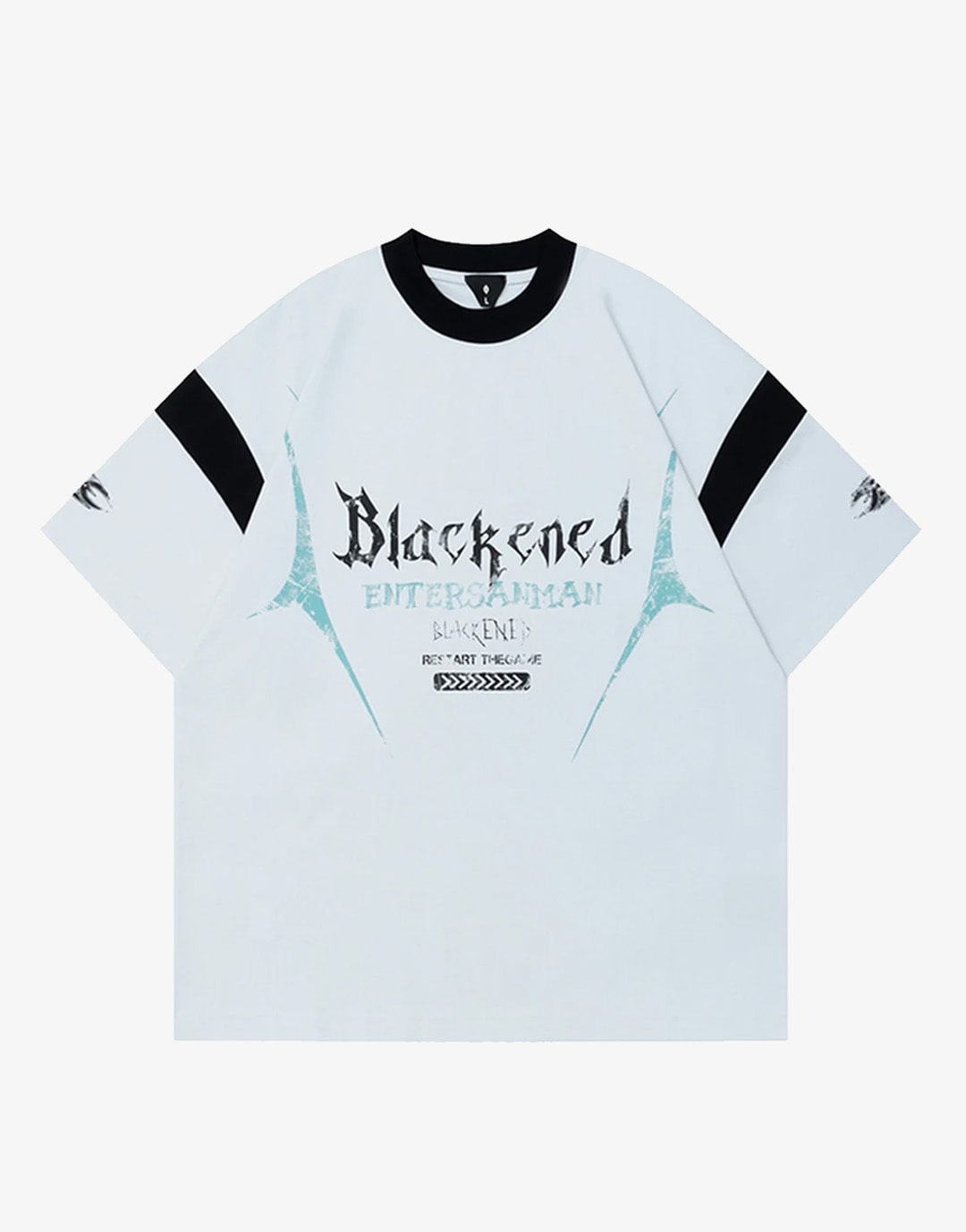

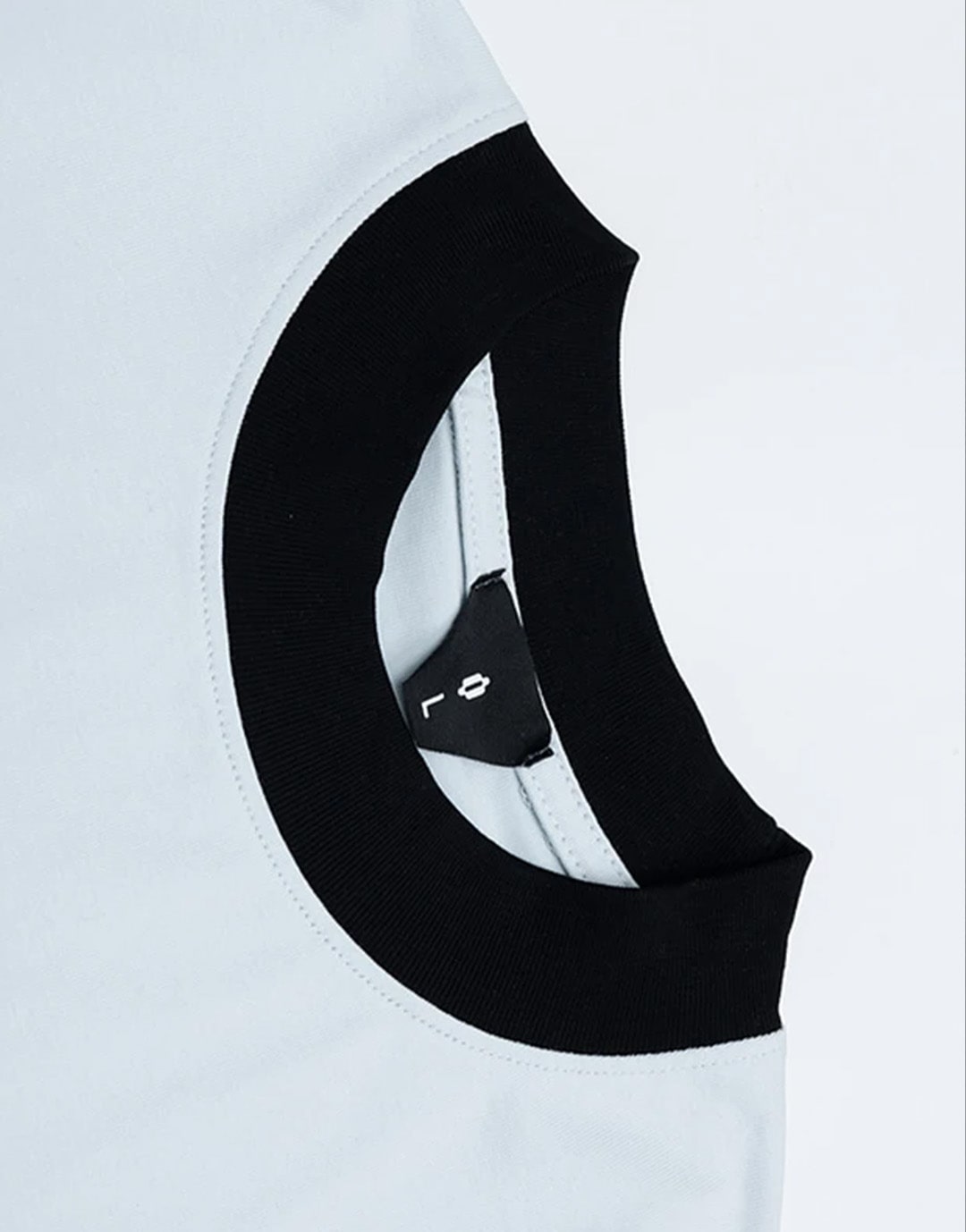
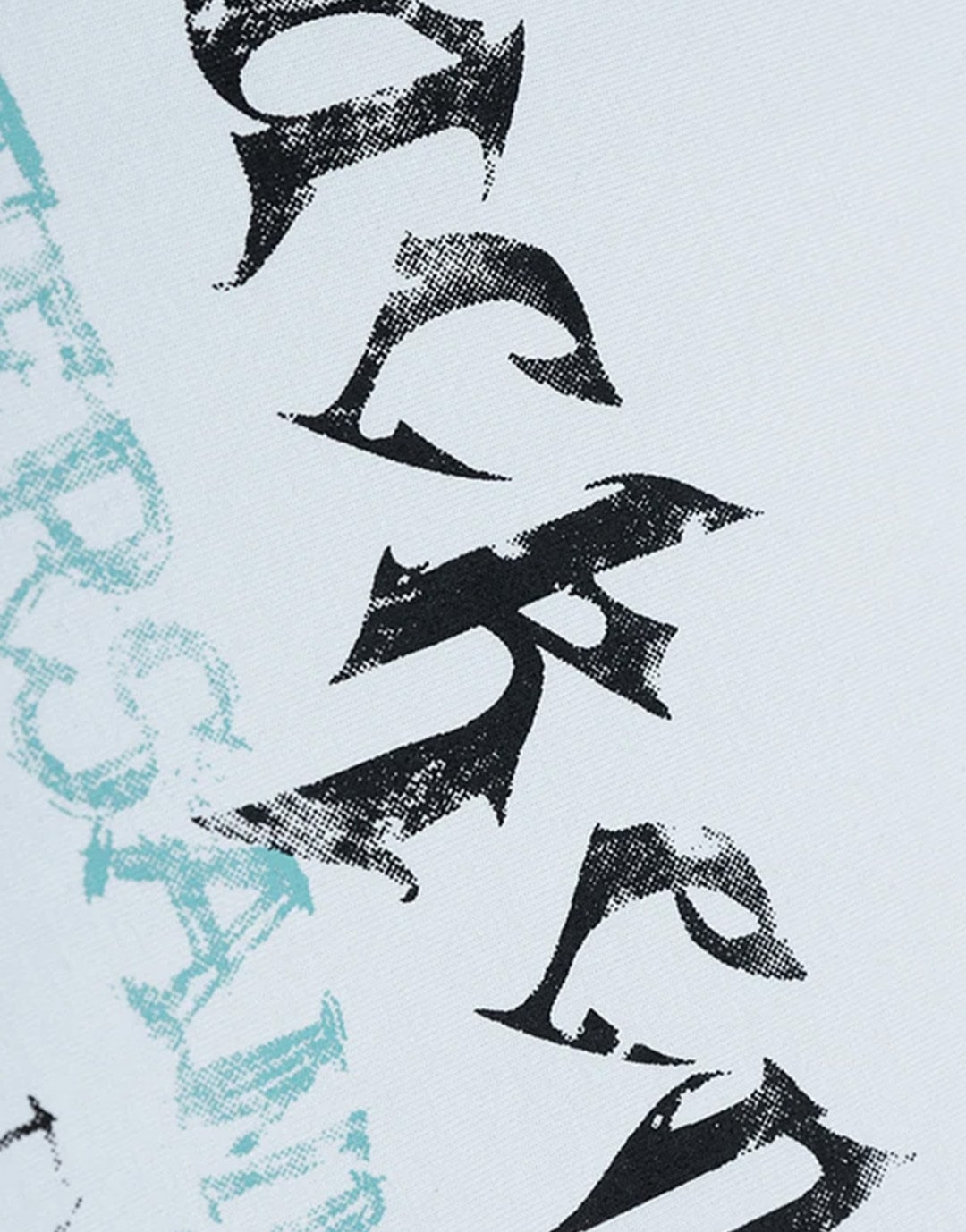
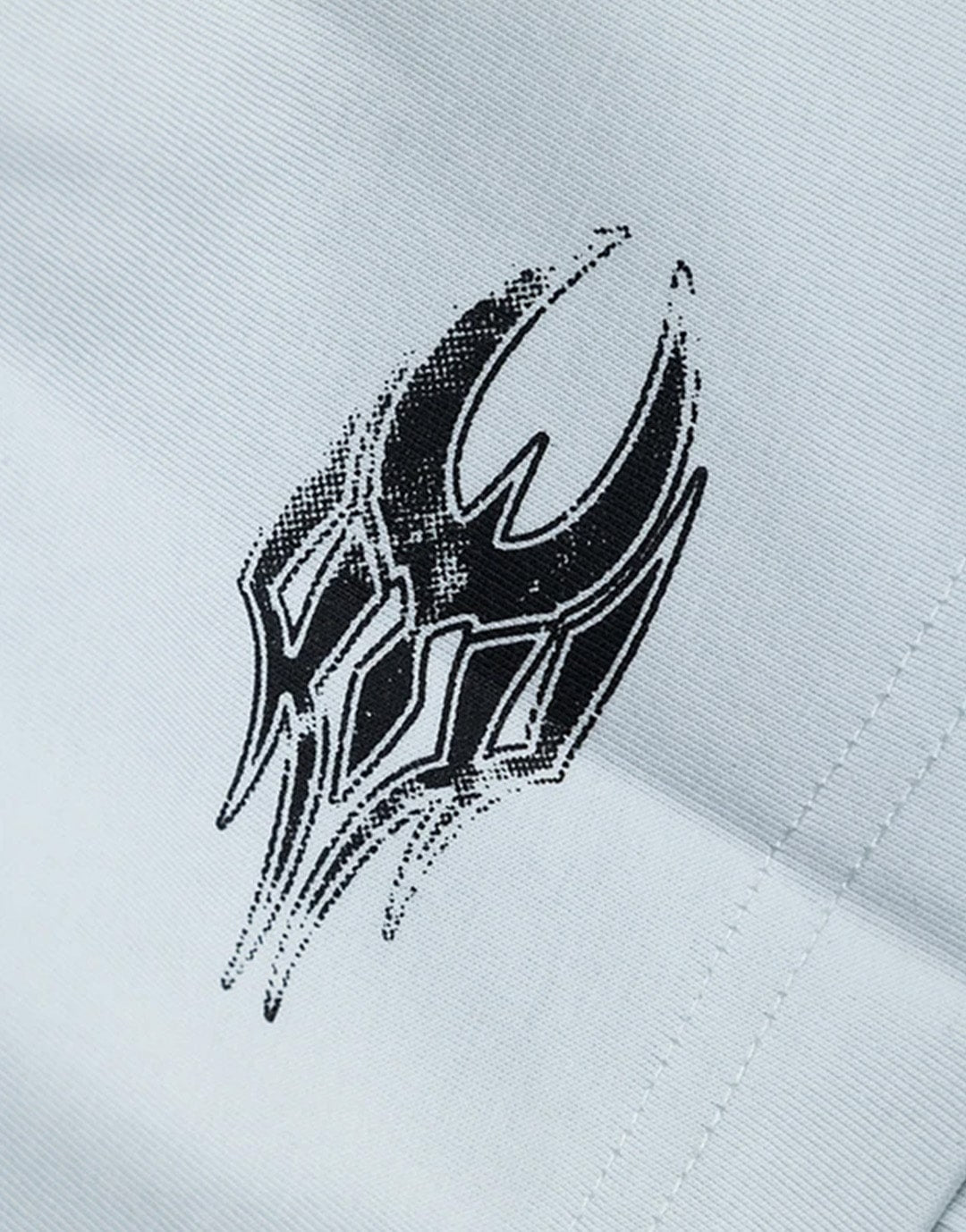
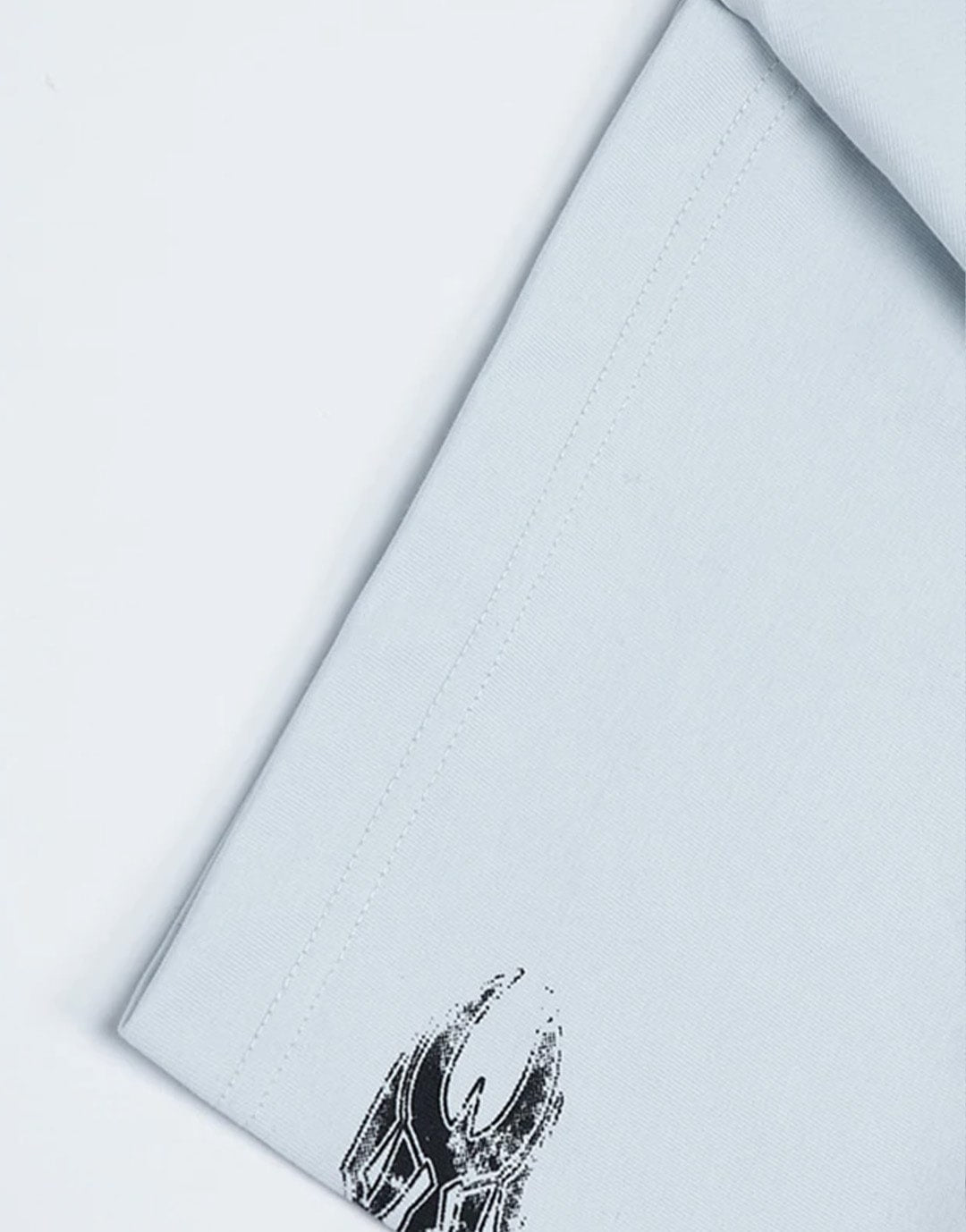


Y2K Cyber Shirt
Size
Edition



shipping
Return
payment
If you're observant by nature, you've certainly noticed that there's a flicker in the collective memory - a pixelated ghost of flip phones, CRT static and cybercafés etched with the primitive hum of modem connections. Taking all this into account, it's easy to argue that the return of Y2K Cyber Shirt is no mere nostalgic whim: it's a re-conquest and re-exploration of the self.
Yes... But to what extent? This nostalgic resurgence raises a fundamental question about our relationship with the digital past. These apparel pieces, once mere billboards for adolescent angst and utopian technological dreams, now pulsate like coded manifestos for a generation that paradoxically masters past and future modes, but seems incapable of fully inhabiting its present.
Indeed, from the glitch-core outfit alleyways of TikTok to the dystopian glamour of Blokecore shows, oversized graphic tees have become talismans of collective identity, their screensaver motifs and fractured logos acting like Rorschach tests for a world obsessed with digital archaeology. Perhaps this obsession reveals less a celebration than an inability to formulate an authentically contemporary aesthetic, as if we were condemned to endlessly recycle the numerical ruins of our predecessors.
Just imagine the fabric as a time capsule, even as an extension of your consciousness but in the form of textile fibers: these kid of Y2K Shirts quickly falls like a ghost from the edge of the millennium, its thick cotton bearing witness to an era suspended between apocalypse and infinity. Consequently, the design emerges as a beautiful collision - worn gothic print melting into cyber tribal motifs, as if reality had glitched and materialized a relic from a forgotten digital cathedral.
On the sleeves of this garment, you'll soon discover striped contrasts evoke the technical elegance of mastered visual glitch - a stylistic signature as recognizable as it is daring. What's more, its vintage symbols, encrypted by a Y2K code, scattered with precision across the knit, transform every fold of the garment into a conversation between past and present.
And, if reading the articles doesn't scare you....This tee will soon seem to transcend its primary function to become a manifesto clothing piece, where every design detail tells the story of a generation that turns its digital references into a deliberately codified fashion statement.
But let's dig deeper into the genealogy of this aesthetic renaissance. Far from being an isolated phenomenon, the Cyber Shirt has its roots in a fascinating paradox: that of a marginal counter-culture turned mainstream. From the dark corners of American shopping malls, where gothic teenagers took refuge, to the bright spotlights of international couture catwalks, this metamorphosis reveals a singular fashion trajectory - where the original obscurity of 2000s style was gradually transformed into a universal visual language. Let's decipher this unlikely fashion itinerary together...
From mall goths to mainstream: The dark origins of the Y2k Cyber Shirt
Picture this: dimly lit corners of mid-2000s shopping mall basements, where teenagers with box-dyed hair and chipped black nail polish huddled around counterfeit CD-Rs of industrial music. It was here, in these liminal spaces between Hot Topic and Spencer's, that the ancestral DNA of the Y2K Cyber Shirt first incubated.
However, what began as a symbol of digital outsiderism worn by those who found community in ASCII art forums and dialup chat rooms has, through the cyclical nature of fashion's metabolism, been reborn as a high-fashion statement. Furthermore, this garment's journey from subcultural uniform to runway centerpiece reveals fashion's perpetual fascination with the aesthetics of alienation.
The original iterations emerged from a perfect storm of millennial anxiety and techno-utopianism. While mainstream outfits celebrated boy-band blandness and flip-phone minimalism, the underground cultivated a more confrontational aesthetic—one that borrowed equally from hacker manifestos, anime sensibilities, and doom-laden Y2K predictions.
What's more, the oversized Y2K-inspired shirt with its gothic distressed print functioned as both protective shell and tribal identifier, worn defiantly baggy at raves where bodies pulsed beneath strobes like glitches in Matrix code. Consequently, each element—from the aggressive typography to the cyber tribal motifs—was imbued with subcultural significance, a wearable form of resistance against an increasingly sanitized commercial landscape.
By the late 2010s, fashion's archaeological expedition into turn-of-the-millennium aesthetics had begun in earnest. Nevertheless, what distinguished this revival was not mere reproduction but critical reinterpretation. The Y2K grunge top migrated from basement shows to Harajuku street style, from niche Tumblr communities to high-concept editorials where art directors recognized its rich visual language.
The heavyweight cotton no longer draped exclusively on bodies hiding from mainstream scrutiny but adorned models in calculated juxtaposition against luxury accessories. Despite this elevation, the apparel retained its emotional voltage—the black base still absorbed light like a digital void, while white and red accents cut through like emergency broadcast signals, preserving the tension between technological optimism and impending crash.
Bridging Y2K Clothes: The linen tee-shirt as a Temporal Interface
Today's wearer inhabits a different relationship with technology than their Y2K predecessors or just like Frutiger Aero. Yet the tee's appeal endures precisely because it bridges temporal experiences—embodying both retrospective nostalgia and speculative futurism simultaneously. The retro-gaming symbols scattered across its surface operate as emotional hyperlinks, connecting disparate moments across digital history.
Moreover, as we navigate increasingly blurred boundaries between physical and virtual selfhood, this wardrobe piece performs a uniquely contemporary function: it translates our complex digital identities into tactile form. Beyond trend or statement, wearing the Cyber Y2K Top represents a conscious engagement with the artifacts of our collective memory—a way of processing who we were, who we've become, and the digital ghosts that flicker between these iterations of self.
Thus, this grunge tee reveals itself as much more than a simple clothing item – it stands as a tangible witness to a fascinating cultural journey, from the dark margins of early 2000s subcultures to the spotlights of contemporary runways. Through its metamorphosis, we observe the cyclical history of fashion, where yesterday's symbols of rebellion become today's style statements. Now see what's inside that flocked top...
Why the Cyber Y2K Shirt is more than fashion—it's a hyperlinked identity
What's next? As we peel back the layers of this digital artifact disguised as a garment, we begin to grasp this short-sleeves tee's profound symbiosis between the wearer and the worn. The Y2K Cyber Shirt is much more than cotton and thread: it functions as an executable file for the body, running cultural scripts every time it's worn.
Indeed, what sets this apparel apart from countless others in the fashion ecosystem is its unique ability to function as both container and content, interface and interface. When worn, its thick fabric becomes a second skin that protects from the present while broadcasting frequencies from the past - a wearable time machine that makes the body both transmitter and receiver of cultural transmissions.
The revolutionary fusion of body and Y2K Digital Garment
This visual hyperlink extends beyond mere aesthetic attributes, though these remain crucial to its function. The contrast stripe details slice through the composition like command lines in forgotten code, while the distressed print techniques simulate the digital degradation of repeatedly saved JPEGs—those artifacts of compression that once marked our earliest forays into image sharing.
Furthermore, the silhouette itself—deliberately oversized, drooping across shoulders like memories too heavy to process—creates negative space around the body that speaks directly to the emptiness we sometimes feel when disconnected from our digital selves. Through this calculated manipulation of form, the Cyber Y2K tee transforms the body into a living server, hosting fragmented data from an era when the promise of technology still carried utopian possibilities rather than surveillance capitalism's cold efficiency.
The wearable Hyperlink redefining 2K25 Fashion aesthetic
Perhaps most fascinating is how the shirt's symbolic encryption adapts to changing contexts. Initially worn as a subcultural uniform to signal belonging among specific digital tribes, it now functions more like open-source emotional software—readable by different generations through vastly different interpretive frameworks.
On one level, the woven tribal motifs speak to older millennials through nostalgic callbacks to LAN parties and early forum culture; however, for Gen Z, these same visual cues represent an archaeological excavation of aesthetic precursors that informed their own digital nativity. Additionally, the long-sleeve variants particularly exemplify this temporal bridging function, their extended canvas allowing for even more elaborate detailing—fingertips literally extending into digital history.
This sartorial time-slippage explains why the Y2K Cyber tee transcends ordinary fashion cycling; it doesn't simply reference the past but actively renegotiates our relationship with it, creating an embodied hypertext that links personal memory to collective digital consciousness. In wearing it, we become both browser and browsed, cursor and clicked—a paradox of identity that perfectly captures our current moment of physical-digital hybridization.
So this apparel, with its heavyweight cotton, distressed gothic prints and cyber tribal motifs, transcends its primary function to become a portal between eras, a decoder of digital identities, and ultimately, a mirror of our ambivalent relationship with our technological heritage. By wearing these pieces, we aren't simply embracing an aesthetic – we're actively participating in an ongoing dialogue between past and future, nostalgia and innovation, underground and mainstream, thereby embodying the complexity of our existence in the digital age.
